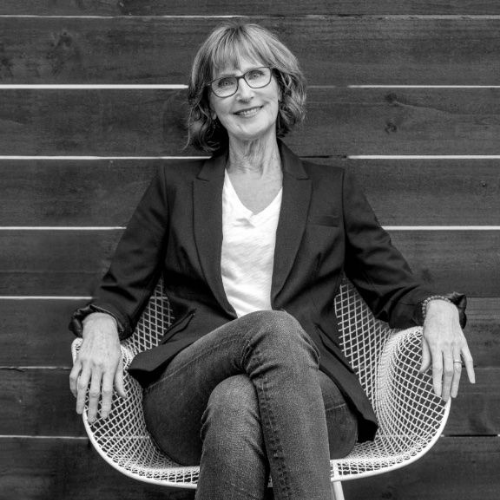
Lauren Hubele is a leading expert in Gemmotherapy in the United States today. She lives in San Marcos where she swims upstream in the river every morning, year round. She’s also a vegan and passionate cook who believes in giving people the tools they need. Besides doing research, writing and lecturing about Gemmotherapy, she also has a plant-based recipe blog on her website.
Lauren, you’ll have to excuse me, as my background with herbs is primary through the lens of Chinese Medicine - can you tell me about how where Gemmotherapy fits into the world of herbal treatment?
Gemmotherapy is different from TCM herbs or any North American herbal product because it uses the meristem cells of the plant. The plants are processed at their freshest state (within 3 hours of picking). It is because of the presence of meristem cells in the bud or root or shoot of the tree of shrub that is used that makes it unique. The meristem cells are what allow for the incredible rejuvenating process that can be obtained with Gemmotherapy extracts.
Regarding the history and training behind Gemmotherapy - how do you get trained in it? Is it through taking seminars through someone who is involved in this kind of work?
Today there are only a handful of key teachers for Gemmotherapy around the world. Each of us shares Gemmotherapy extracts through our own lens of understanding. There is a brilliant professor in Italy, another in producer and key researcher Belgium, several professors, pharmacists, and physicians who teach in Romania, another in Canada and then there are three of us teaching in the United States. We each have our own unique approach.
The majority of published materials and teachings on Gemmotherapy extracts presents them through in an allopathic view. Extracts are presented by the organs and organ systems affected and the symptoms or diagnosis they were known to address. While this is helpful information it doesn’t provide a path in which to apply the extracts. Because this was all that was available when I began to study Gemmotherapy that is how I learned the extracts. However, when I began to apply them in my practice with real patients, I discovered this method really fell short.
Through a lot of trial and error in my own practice and hundreds of cases, a system started to form itself. I worked with the top research doctors in Romania and Italy, where I would say “I’m really seeing european blueberry acting like this, would you see if what I’m seeing is backed up pharmacologically?” And they would come back with “well not really, maybe what you’re seeing is this [aspect of the herb]”. And so in that I was able to create my own system and that’s what I teach today.
I’m currently exploring micro-dosing extracts now, something brand new. Instead of the pharmacological suggested dose of 25 drops, only one or two is taken that engage with the nervous system. I’m working with Dr. Olah Nelly, a professor of pharmacology and biochemist in Romania. She’s the director of research for the Plant Extrakt Gemmotherapy lab and supervising my first blind study. These are exciting times in the study of Gemmotherapy and taking a class with me is not just going to be about studying the materia medica.
It seems like something that is old, viewed differently now in a modern lens.
I think I would come back to what you just said and I would say it is actually an older medicine which was being looked at a modern allopathic way and I am taking it back to its roots and of looking at the body holistically. Unless we go there and look at how the body heals, we get partial results. I’m looking at bringing harmony back to the body, so that the beautiful immune system we’re born with is activated and can do its work.
Looking at your bio, I learned that you came to this medicine from a patient’s standpoint when you were diagnosed with cancer and were introduced to it by a ND while in Germany. Can you tell me a little about how they use this in Europe and if it’s used more there than here for now?
In Europe Gemmotherapy it can only be used by licensed medical professionals. They could be physicians, osteopaths, midwives, acupuncturists, or other licensed in the medical field.
Gemmotherapy is definitely used more in Europe, but it is limited to certain regional areas. For instance, it’s not really used or known in Germany. In Germany they haven’t really figured out how they want to classify it, so it’s just in the no-man's land right now. It seemed natural to me that it would take off in Germany, but instead there are countries like the Ukraine and Bulgaria excited about Gemmotherapy, with no easy access to the extracts.
How many extracts are currently available?
Right now, there are a good 60 that are standardized and commonly available. You could stretch that number to 75 if you are looking at some of the newer ones being studied. When I teach my foundations program, I teach 26 entry level extracts. That is more than enough to treat a wide variety of acute conditions as well as begin treating chronic care cases.
Who is the person or organization experimenting with these newer plants?
Dr. Fernando Pitera of Italy is considered the grandfather of Gemmotherapy. He is a homeopath, internal medicine doctor and herbalist and author of the only pharmacopeia of Gemmotherapy that exists (Gemmoterapia - published in Italian and French). Dr. Pitera is constantly reviewing other extracts and plants and has dedicated his life to this.
There’s also Philippe Andrianne, who is conducting his own research. I’ve had the pleasure of meeting these gentlemen personally. We have a great deal of mutual respect for one another. Even though our work and approaches are very different.
That’s kind of the nice thing, with a group so small, it’s so easy to stay connected and have some real conversations and support each other.
Yes! I love that. Is it a newer medicine. I love batting around ideas. This only hit the pharmacopeia in the late 1950s. When we look at medicines and therapies that’s very new. It is quite insular because all the writings were in French - that really slowed down the process. My books are the first coming out in English.
Can I ask how you work with clients differently than a homeopath or TCM herbalist might?
When you look at allopathy, it’s the study of symptoms as opposed to the whole. Homeopaths are trained to cure the whole, but my experience as a homeopath is that it doesn’t manage to cure the whole.
When I work with a client, I will enter with a similar approach whether you’re coming to see me for fertility or a ruptured disk. Your body heals in the same order; whatever the problem is, we’ll start in the same place, but what follows will vary. There are no set protocols (like in homeopathy).
In TCM just as with gemmotherapy, you also are not looking at any set of protocols. If you’re looking at high blood pressure, you’re looking to treat the root of that pathology. Gemmotherapy is an absolutely beautiful complement therapy for acupuncturists, because it aligns with TCM way of treating patients with herbs. I use TCM consistently when classifying the extracts and when looking at the organ clock to plan treatment timing. I’ve worked with a lot of acupuncturists, and we’re helped inform each others work.
How are patients finding out about this? How do most patients come to you?
You know what? People are now searching gemmotherapy. It’s actually becoming a thing. Seven years ago, totally not true. Even three years ago, people would find me because a friend referred them but knew nothing about it. But now people are literally searching and I get emails from around the world daily with questions.
What does your practice look like these days?
My practice is actually the smallest part of my work today because I do so much traveling, teaching and writing (generally one book a year). I give talks for health advocacy. What I call my practice now is health coaching. It’s my goal that you become so self sufficient that you only come see me when you can’t figure it out yourself.
I love that!
My goal is very different than when I started as a practitioner where I was the “expert” and people would come to me and if it didn’t work they would come back. Energetically, that felt uncomfortable to me. I later trained in coaching skills and learned how to give that responsibility back to my client. We collaborate on their health decisions. I am the topic expert, but they are their body’s expert. The only way to succeed is to work together. I train practitioners in all different fields to use that approach. The other is simply not serving people who feel powerless over their health and often leaves both practitioners and clients frustrated.
I feel like many patients intuitively know what is at the root of their health concerns, so I am so glad that you collaborate with them to find solutions!
Awareness is step one, the next steps forward require something of great interest to me. Currently I’m researching this field of emotional immunity, and how building up our emotional immunity makes us stronger and more capable of making those lifestyle choices needed for full healing.
When we’re in this victim mode, we’re not going to GIVE UP CHEESE. That might be the one pleasure we have in life! When we build in this space, and have the capacity to have more perspective it gives us the opportunity to make important lifestyle decisions. This is one of the most powerful changes in my practice I’ve made over the years, and a large part of what I will be teaching at AOMA. Teaching how to help our clients this way is almost as powerful as teaching gemmotherapy.
As a practitioner, do you consult with anyone when you’re stuck in treating yourself?
I have a long time acupuncturist, AOMA graduate, who is my acupuncturist in Austin and also a dear friend who studied gemmotherapy with me. My homeopath is in Boston whom I also consult with when I get stuck. She grew up in Kolkata with her father who was a homeopathic physician. In my opinion she has one of the greatest homeopathic minds in the U.S.
Right now, herbs in general are not regulated in the States, what are the differences you see in Europe?
Let’s put it this way: I buy my product from Europe because it’s regulated. There are a few producers in the US who are making small batches. I’m not comfortable with purchasing from them yet, because they are not regulated here. I’m not a big government person by any means. But the EU and its ability to make agencies uphold the pharmacopoeia and how gemmotherapy is meant to be prepared is so important.
Is there anything else you’d like to leave readers to know about you that I haven’t already asked?
It’s important for people to know what my passions are. For anyone taking this class, it’s an opportunity to come out as a better practitioner, not just to gain a new tool. I will challenge the way people look at the human body, even in a TCM perspective by looking at the layers and how they should heal.
My personal passions are empowering mothers all over the world. I’ve started international gemmo-mom groups. These are groups of mothers teaching mothers how to use these extracts acutely so they can treat their children in the middle of the night. This is such a safe, gentle-acting extract that it’s simple. It’s not like learning thousands of herbs or thousands of homeopathic remedies. It’s a real passion of mine as well as my developing research on emotional immunity and gemmotherapy.
Thank you so much for your time, Lauren! Readers - if you are interested in learning more about Lauren and her work, feel free to check out her website, Facebook, instagram and upcoming class (TX Acupuncturists will receive 8 Biomedical and 8 Herbal CEUs).
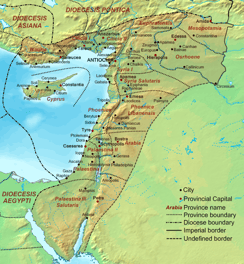
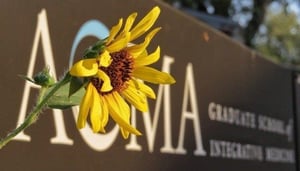 AOMA along with the world of Acupuncture as a whole has moved away from the usage of the word. The medicine taught and practiced at AOMA comes not from the falsely depicted “backwards nations” of colonial fiction, but from the rich, vibrant cultures of Asia which were just as diverse and advanced (more so at times) as those of Europe. By shedding this burdened word from our lexicon we seek not to abandon the roots of Acupuncture, but rather to continue integrating this medicine into American society.
AOMA along with the world of Acupuncture as a whole has moved away from the usage of the word. The medicine taught and practiced at AOMA comes not from the falsely depicted “backwards nations” of colonial fiction, but from the rich, vibrant cultures of Asia which were just as diverse and advanced (more so at times) as those of Europe. By shedding this burdened word from our lexicon we seek not to abandon the roots of Acupuncture, but rather to continue integrating this medicine into American society.

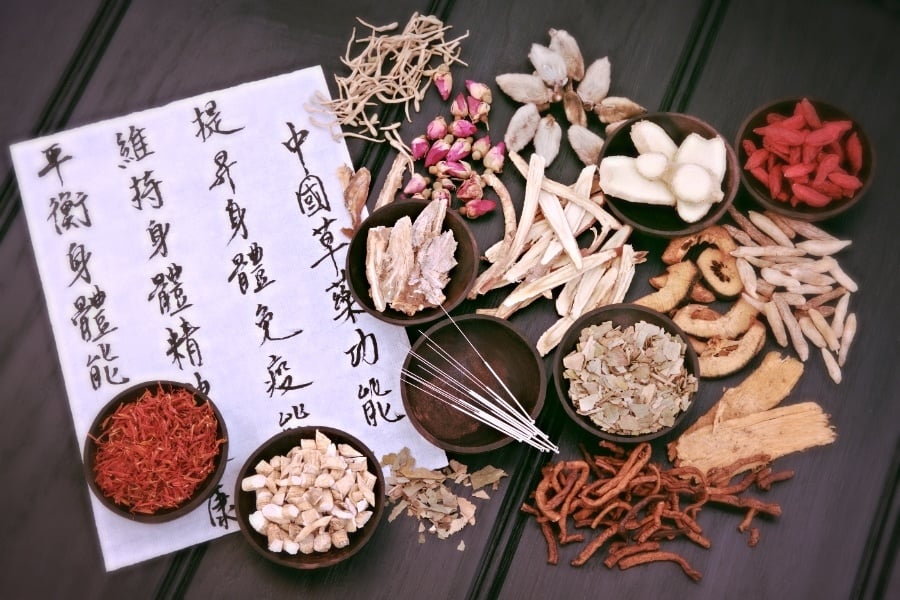


 2. Flexibility
2. Flexibility 


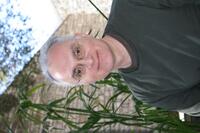 Wally Doggett, owner of
Wally Doggett, owner of 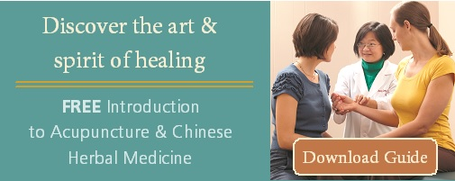
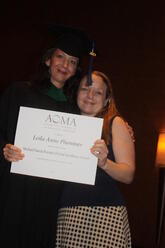 At the 2013 commencement ceremony on September 15th, AOMA student Leila Plummer was recipient of the Michael Garcia Prendes Herbal Excellence Award. Since 2006 this honor has been bestowed upon a student who excels in the study of herbal medicine. The recipient is chosen by the previous year’s beneficiary, as someone who strives for superior herbal knowledge and shares the love of learning herbs with fellow students.
At the 2013 commencement ceremony on September 15th, AOMA student Leila Plummer was recipient of the Michael Garcia Prendes Herbal Excellence Award. Since 2006 this honor has been bestowed upon a student who excels in the study of herbal medicine. The recipient is chosen by the previous year’s beneficiary, as someone who strives for superior herbal knowledge and shares the love of learning herbs with fellow students.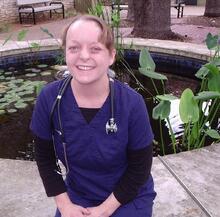
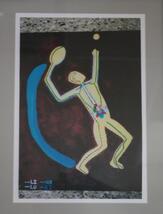 Michael Garcia Prendes contracted a terminal illness and died before he could graduate. AOMA framed a beautiful print that Michael painted of a tennis player (with acupuncture meridians) about to serve a ball. Michael painted the piece for Pam Ferguson’s shiatsu class. The print hangs in the student lounge with the sentiment that suits Michael’s character: “Be present and focus, Lift up and Serve.”
Michael Garcia Prendes contracted a terminal illness and died before he could graduate. AOMA framed a beautiful print that Michael painted of a tennis player (with acupuncture meridians) about to serve a ball. Michael painted the piece for Pam Ferguson’s shiatsu class. The print hangs in the student lounge with the sentiment that suits Michael’s character: “Be present and focus, Lift up and Serve.”
